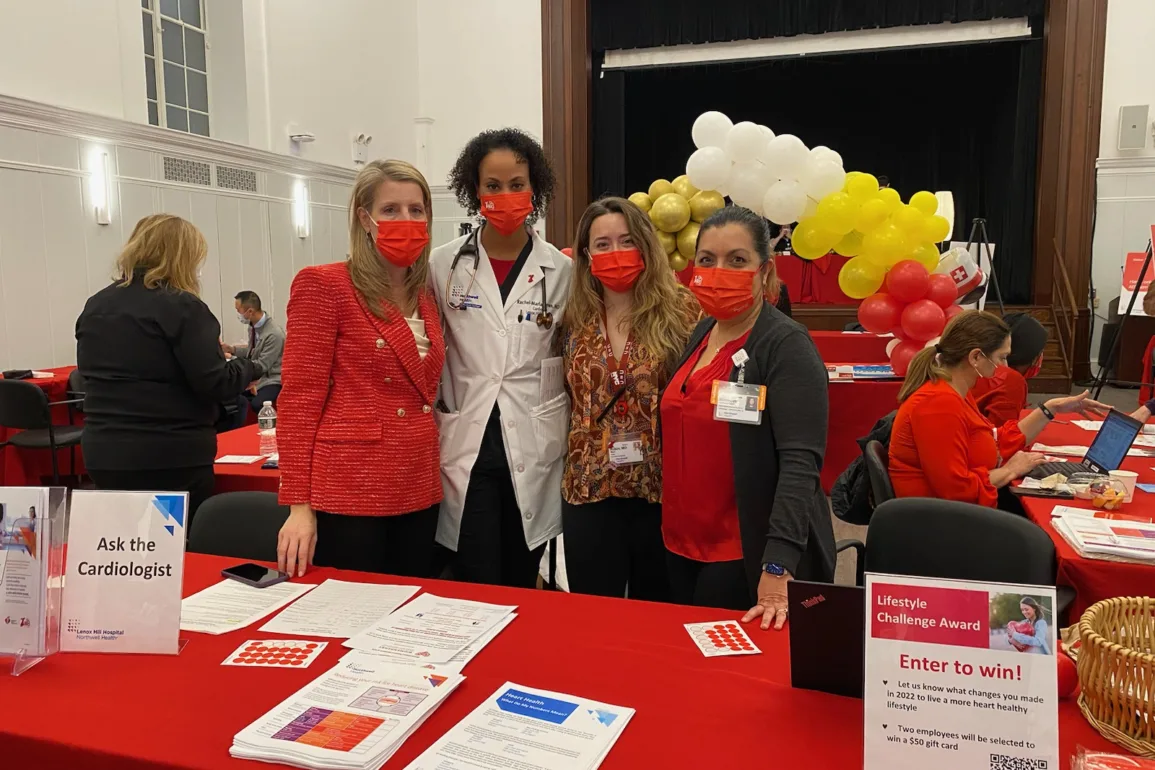
“Even to this day, if my body goes completely calm, I’m afraid my heart is going to stop,” said Michelle Allison, a clinical supervisor at the Positron Emission Tomography Center at Johns Hopkins Hospital in Baltimore.
In 2006, Allison was diagnosed with dilated cardiomyopathy, which is when the heart’s main pumping chamber becomes enlarged, stalling blood flow to the heart. Despite taking several medications and undergoing treatments to stabilize her heart rate, Allison still struggles with feelings of fear and anxiety stemming from the day she was diagnosed.
“The biggest lifestyle change was watching what you eat and watching what you drink to be able to survive to the next day or not throw yourself into congestive heart failure,” said Allison. “That’s a very difficult thing for me because I threw myself into heart failure almost weekly because I couldn’t understand it. Now, I haven’t had heart failure in years.”
According to the Centers for Disease Control and Prevention (CDC), the primary cause of death in the United States is heart disease, which encompasses several types of heart conditions. These include coronary artery disease, arrhythmia, congenital heart failure, heart valve disease, and other conditions. Risk factors such as obesity, hypertension, and diabetes can predispose individuals to heart disease or heart attack.
Data from the U.S. Department of Health and Human Services Office of Minority Health shows that Black Americans are more likely to die from heart disease than non-white Hispanic people. Black people also have higher blood pressure and are less likely to have their blood pressure under control compared to non-white Hispanic people. Black Americans are diagnosed with diabetes more frequently than non-Hispanic individuals, with Black men experiencing higher rates. Black women exhibit higher rates of obesity than any other racial group, a significant risk factor for cardiovascular disease.
Dr. Rachel-Maria Brown Talaska, a cardiologist with Northwell Health specializing in acute care cardiology and a volunteer ambassador for the American Heart Association (AHA), said these rates can be attributed to several factors, including poor nutrition, insufficient physical activity, and chronic stress.
“Kick those habits. If you’re smoking, you’ve just got to stop. If you’ve been doing drugs, [drinking] excessive alcohol, or under toxic stress, then those things need a serious intervention,” said Brown Talaska.
She also noted potential barriers, including lack of education and access.
“If you don’t have an introduction into education, [and] into the topic of health—of heart health and health disparities and cardiovascular disease, [as well as] risk factors, how do you know where to start?” she said. “You don’t know what you don’t know until somebody’s there to turn on the light.”
As a volunteer ambassador with the AHA, Brown Talaska provides education and awareness to the community, where she emphasizes the signs to look out for.
“Know your family history,” she said. “Know your numbers. This is a classic American Heart Association teaching. Know your cholesterol. Know your blood pressure number. Know your blood sugar numbers.”
Allison said she was vaguely aware of her genetic predisposition toward heart disease. Even after losing immediate family members to various heart-related conditions, pinpointing a hereditary pattern was difficult due to limited awareness.
“You’re not aware of the symptoms per se because you don’t got somebody saying, if you’re short of breath, that could be a sign of a heart condition. You think shortness of breath is asthma and lung related; you don’t think of it as being necessarily your heart,” she said. “You figure the only thing really wrong with your heart is if you have a heart attack and if you have a heart attack, you get a pain in your chest or pain in your arm.”
After landing on a gurney on that scary day in 2006, with doctors rushing her to the labor and delivery unit as her heart rate skyrocketed, Allison prioritized her heart health and that of her baby boy. During a routine pediatric checkup when her son was a few months old, Allison learned that he had an extra heart murmur. When he was 3 years old, she took him to see a cardiologist for open heart surgery.
“My son had a hole in his heart,” Allison said. “And the thing is—my pediatrician—when I told my cardiologist, she said, ‘Oh, he’s good. You gotta keep him because not very many pediatricians catch that.’”
Allison said her experience with healthcare professionals has been primarily positive, but that isn’t the case for everyone. Frederick Robinson, co-founder and chief operations officer of the Black Heart Association, a nonprofit organization dedicated to eliminating heart health disparities in communities of color, said there is a lack of compassion in the healthcare system.
“If you’re providing me with a healthcare service, and you don’t really care, then the health piece is going to be very, very hidden,” said Robinson. “I think that we’ve faced that as African Americans for a very long time. There’s no care in healthcare, and we suffer as a result.”
Robinson’s organization focuses on mending heart health disparities through advocacy, education, and empowerment. Their main program, Vehicle for Change, brings healthcare, food, and insurance access and more to underserved communities throughout Texas.
Robinson explained that the goal is for people to put what they learned from the outreach programs into practice.
“We really want to motivate people to apply the information that they receive because potential power is pointless,” he said. “We want to turn that into some kinetic energy [and] some action.”
Brown Talaska emphasized a similar message, noting the importance of asking questions when seeking care.
“You’re in the doctor’s office, and you’re like, ‘A lot of this is gibberish.’ If you find yourself confused [and] befuddled, you’re just in the dark, you’re too scared to ask [a] question because you have no idea what was just told to you, then education is for you,” she said.
The need for an empathetic approach from the healthcare system toward the Black community remains a crucial component in addressing heart health disparities, along with an approach devoid of prejudice and dismissal. Instead, care has to be infused with a willingness to thoroughly understand the culture, limitations, and humanity of Black patients.
“At the end of the day, everyone just wants to be acknowledged, and everyone wants to feel like they matter,” Robinson said. “I’m in the doctor’s office. I must need your services. But before we get to that, I’m a person. You’re a person. Let’s have some relationship development going on here so that we can really get to the root of what I need. Until we do that, then, we’re just checking boxes.”For more information regarding heart health prevention and intervention, go here: https://health.gov/myhealthfinder/health-conditions/heart-health/keep-your-heart-healthy.






